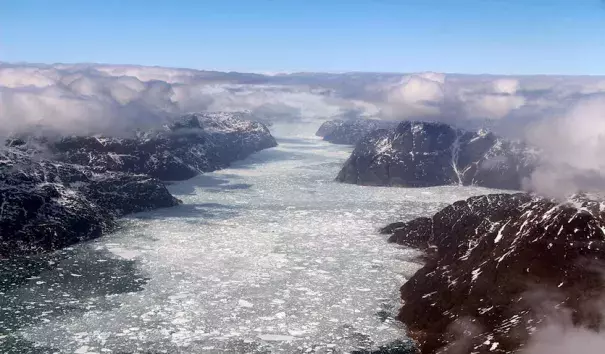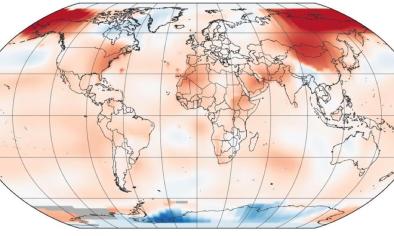Headline
Arctic Sea Ice Primed for Phenomenal Melt Season
Greenland

A fjord in southern Greenland, as seen during NASA's Operation IceBridge's last flight of the 2017 Arctic campaign, on May 12, 2017. IceBridge has operated over the last few year to supplement observations of Arctic sea ice ahead of the upcoming Ice, Cloud, and land Elevation Satellite-2 (ICESat-2), due to launch in 2018. Photo: John Sonntag, NASA
The Arctic Ocean’s coating of sea ice—now remarkably thin and sparse after a record-warm winter—could plummet by late summer to the lowest extent in 38-plus years of observations. Weather conditions over the next few weeks will determine just how much melting ultimately occurs. However, the ice is so depleted that even a melt season from here on that’s average by recent standards could leave the ice at a record-low extent.
Thus far, the 21st century has seen two grand dips in Arctic sea ice extent, in 2007 and in 2012. In both cases, the ice saw a modest but incomplete recovery, and the 38-year observation period can be easily split into “before” and “after”: each year after 2007 has seen a lower minimum than each year beforehand.
Related Content
Headline

Nov 29, 2017 | Mashable
Earth heads for a top 5 warmest year as the Arctic heats up
Science Source
| Wiley Interdisciplinary Reviews: Climate Change
Amplified Arctic warming and mid‐latitude weather: new perspectives on emerging connections
Francis, Jennifer A., Vavrus et al
Science Source
| The Arctic Monitoring and Assessment Programme (AMAP)
Snow, Water, Ice and Permafrost in the Arctic (SWIPA) 2017
Headline

Nov 28, 2017 | Carbon Brief
State of the climate: 2017 shaping up to be warmest ‘non-El Niño’ year


